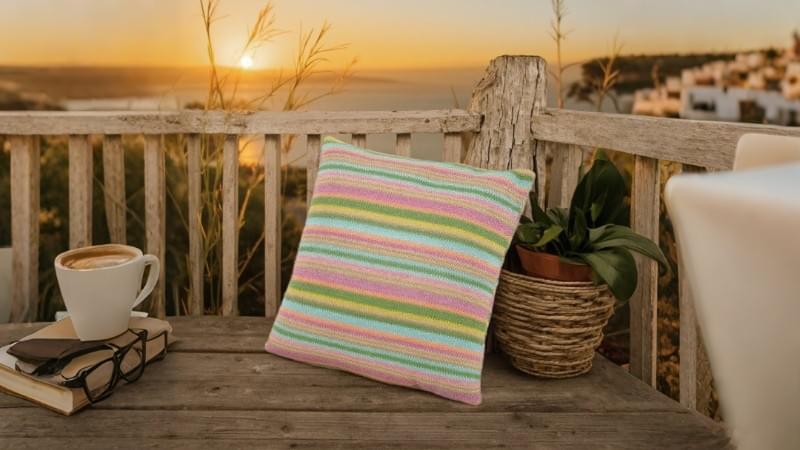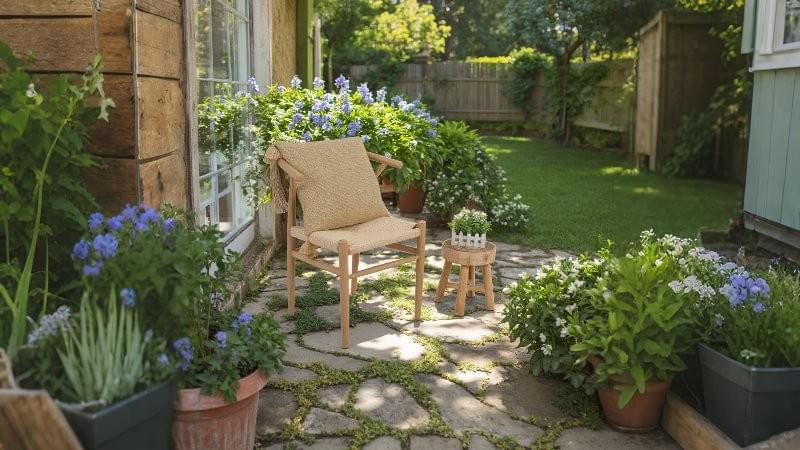Strolling through the streets of Paris or the countryside of Provence, you will always be attracted by those pillows adorning the outdoor space. They are not only decorative, but also an expression of attitude towards life. In recent years, the French outdoor pillow market has quietly warmed up, from urban balconies to vacation villas, from eco-hotels to corner cafes, these soft little objects are in different materials, designs and styles to meet people's imagination of outdoor life.

Who is buying outdoor pillows?
Walk into a home store and you'll notice that most of the customers picking up outdoor cushions are women between the ages of 25 and 45. They focus on comfort and beauty and are willing to pay for high-quality design. In the eco-life hall, young consumers prefer to choose styles that imitate natural fibers, which are not only natural to the touch, but also in line with their pursuit of sustainable living.
Hand-woven raffia pillows are preferred in the countryside and resorts of Southern France. Interestingly, young people on a limited budget have not been overlooked - faux raffia pillows, with their realistic look and affordable price, are selling well nationwide, especially on online discount platforms, where sales are rising year after year.
How is the market changing?
The French outdoor home market has boomed in recent years. Figures show that outdoor pillow sales in 2023 have surpassed €120 million. Faux natural fiber pillows are leading the growth with approximately €30 million in sales, showing strong market potential. Faux raffia pillows, though with a smaller market share, are expected to grow to €12 million in 2025, and the continuous and stable growth curve also proves its unique market positioning.
It is not only changing consumer habits that are driving growth, but also the redefinition of the outdoor lifestyle. With the rise of camping culture, urban terraces and gardens have become the “second living room” of families, and pillows, as the most flexible decorative item, have become the first choice for upgrading outdoor spaces. Increased environmental awareness has also brought attention to faux natural fiber pillows and faux raffia pillows, with every detail telling a story of sustainability, from the biodegradable fill to the smart labels with carbon footprint tracking.

Material and design: from utility to art
If you think outdoor pillows are just synonymous with “stain-resistant and waterproof”, you may have underestimated their potential. Today's outdoor pillows have long jumped out of the single functionality, material and design innovation makes them both practical and artistic sense.
Faux natural fiber pillow using environmental protection dyeing technology, color is more soft and natural, and even with the sunlight slight color change.
The hand-woven texture of raffia pillows is unique, and each piece is like a small work of art, especially favored by countryside lodges and theme hotels.
Faux raffia pillows, on the other hand, utilize advanced technology to replicate the handcrafted texture at a lower cost, while improving weather resistance so that consumers with limited budgets can enjoy a similar style.
Consumer behavior: different choices for domestic and commercial markets
In the average home, outdoor pillows are most often found on balconies, terraces or gardens, adding a bit of coziness to leisure time. In commercial spaces, however, these decorative items are given more meaning. High-end hotels and resorts are making pillows more than just a functional presence - they're leaning lazily on lounge chairs or scattered casually in the corners of terraces. These seemingly unintentional collocation, often best reflect the unique temperament of the space.
This differentiated use of the scene, bringing different consumer choices. High-end places prefer natural materials, such as hand-woven raffia pillows, even if the price is on the high side are willing to pay. While ordinary families pay more attention to practicality, waterproof and sunscreen faux natural fiber pillows and faux raffia pillows become the first choice. It is worth noting that budget hotels and flash stores have also begun to purchase faux raffia pillows in bulk, because they can create a natural texture, but also cheaper than the real raffia products by nearly 40%, in the control of costs without losing style.

Brand competition: from giants to niche
While outdoor furniture is dominated by big names like IKEA and Fermob, the pillow market has given more opportunities to emerging brands: Atelier Raffia has gained a foothold in the market with its exquisite handcrafted weaving, while Ecoalf has won over a group of loyal fans pursuing sustainable living through its eco-friendly concepts.
The rise of online channels has given niche brands more opportunities to showcase their products: independent designers who insist on handmade products on Etsy, and niche brands that specialize in originality on eco-friendly platforms are all telling their own stories with their unique product language. While strolling through the streets of Paris, those hidden in the corner of the special home furnishing stores, creative bazaar opened only on weekends, can always be found to surprise the special style - these works with the temperature of the artisan, often the most able to impress the pursuit of individuality of consumers.
Future trends: Smart and sustainable
The future of outdoor pillows may be more “intelligent”. Intelligent temperature-controlled fabrics and AR virtual matching technology have already been tested in the high-end market, while the development of biodegradable simulation materials makes environmental protection and low price no longer contradictory.
But no matter how it changes, people's expectations of outdoor pillows remain unchanged - it should allow people to relax and make the space more warm. Whether it's a rattan chair in the South French countryside or a small balcony in a Parisian apartment, a pillow can liven up an ordinary corner as long as it's properly matched.
If you're thinking of adding a few pillows to your outdoor space, ask yourself: do you prefer the natural touch, or do you value practicality and ease of care? Willing to pay for craftsmanship, or more cost-effective? These seemingly simple choices often hide the most suitable answer for you.

